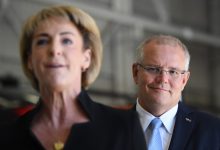Remember this?
“Bill Shorten wants to end the weekend when it comes to his policy on electric vehicles where you’ve got Australians who love being out there in their four-wheel drives.”
That was Australia’s prime minister, Scott Morrison, in full flow in the midst of last year’s election campaign, just moments after he said this:
“What about all these charging stations, how much is that going to cost? I mean if you have an electric car and you live in an apartment, are you going to run the extension cord down from your fourth floor window?”
The nation’s idiotometer shot to capacity on that day and stayed there for most of the campaign, as ministers Michaelia Cash and Angus Taylor weighed in with claims that Labor wanted to steal tradies’ utes, and that it would take days and days to charge an EV with solar.
From a techno-phobe government whose leaders liked to compare big batteries with big bananas and the Kardashians, it wasn’t very surprising, even if it left listeners with a feeling of deep despair. But perhaps now the Morrison government is getting ready to come full circle on EVs. And maybe even other technologies invented in the 21st century,
The discussion paper for the technology roadmap released on Thursday by energy and emissions reduction minister Taylor notes two things that the Morrison government in election mode would never admit – embracing electric vehicles can cut emissions and lower costs.
The report notes that “electrification of light vehicles expected to be rapidly increasing by 2030,” by which time “increased adoption of electric vehicles would provide emissions reduction and cost savings, together with improved urban air quality and other benefits.”
Breakthrough!
And it adds there are added benefits too, in the form of helping out the grid. And the role that the increased amount of renewables – which the Coalition government now accepts will reach a 50 per cent share by 2030, despite attacking Labor’s exact same target – will play in lowering emissions from transport.
“Potential abatement from electric vehicles will increase as the share of renewable generation rises and, coupled with distributed energy resource management systems, could also deliver grid-firming benefits.”
And it goes on to note the well-known impediments to the uptake of EVs. The fact that there are a host of technologies close to commercial readiness to assist in the rollout of EV but are not being deployed at scale. “For example, the latest engine and hybrid technologies (energy management technologies and electric vehicles, among others) are not reaching the Australian market in significant volumes.”
 Australia has a paucity of EV choices. There are barely a dozen different models available, and just about all of them are priced above $50,000, and some well above that. That compares to the more than 400 different models available elsewhere in the world, as this table from BloombergNEF illustrates.
Australia has a paucity of EV choices. There are barely a dozen different models available, and just about all of them are priced above $50,000, and some well above that. That compares to the more than 400 different models available elsewhere in the world, as this table from BloombergNEF illustrates.
And there is the lack of re-fuelling infrastructure, such as the networks of charging stations. Why would that be? Possibly because of a government that makes the sort of comments found at the start of this article.
The report notes that “supporting the development and commercialisation of technologies to improve supporting infrastructure will complement the Government’s forthcoming National Electric Vehicles Strategy”.
That strategy is already on hold. It will be interesting to see what it delivers. Given that the government has quietly dialled in Labor’s 50 per cent renewables target as a given, because of technology, lower costs and emissions reductions, perhaps it will do the same for Labor’s EV target of 50 per cent of new vehicle sales. Like Labor, it could target the fleet market which accounts for half of all sales. It wouldn’t be that hard.
RenewEconomy and its sister sites One Step Off The Grid and The Driven will continue to publish throughout the Covid-19 crisis, posting good news about technology and project development, and holding government, regulators and business to account. But as the conference market evaporates, and some advertisers pull in their budgets, readers can help by making a voluntary donation here to help ensure we can continue to offer the service free of charge and to as wide an audience as possible. Thankyou for your support.










